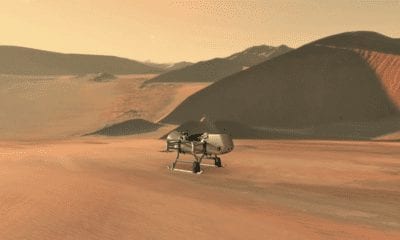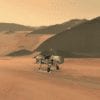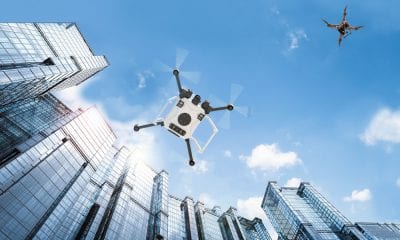News
Greased Lightning – 10 Rotor UAV Tested by NASA Langley
NASA Langley researchers have designed and built a battery-powered, 10-engine remotely piloted aircraft (UAV). The Greased Lightning GL-10 prototype has a 10-foot wingspan and can take off like a helicopter and fly efficiently like an airplane.
The team, at NASA’s Langley Research Center in Hampton, Virginia, is looking at the idea initially as a potential unmanned aerial vehicle (UAV). “We have a couple of options that this concept could be good for,” said Bill Fredericks, aerospace engineer. “It could be used for small package delivery or vertical take off and landing, long endurance surveillance for agriculture, mapping and other applications. A scaled up version — much larger than what we are testing now — would make also a great one to four person size personal air vehicle.””
The GL-10 is currently in the design and testing phase. The initial thought was to develop a 20-foot wingspan (6.1 meters) aircraft powered by hybrid diesel/electric engines, but the team started with smaller versions for testing, built by rapid prototyping.
During a recent spring day the engineers took the GL-10 UAV to test its wings at a military base about two hours away from NASA Langley. The remotely piloted plane has a 10-foot wingspan (3.05 meters), eight electric motors on the wings, two electric motors on the tail and weighs a maximum of 62 pounds (28.1 kilograms) at take off.
It had already passed hover tests — flying like a helicopter — with flying colors. But now was the big hurdle — the transition from vertical to forward “wing-borne” flight. As engineers who have designed full-scale vertical take off and landing tiltrotors such as the V-22 Osprey will tell you — that is no easy task because of the challenging flight aerodynamics.
In this video, engineers successfully transition the plan from hover to wing-borne flight in tests at Fort A.P. Hill in Virginia.
The next step in the GL-10 test program is to try to confirm its aerodynamic efficiency, but first is a stop at the Association for Unmanned Vehicles Systems International 2015 conference in Atlanta May 4-7. The GL-10 will be the centerpiece of an exhibit showcasing some of NASA Langley’s UAV research.
Part of that UAV research is for NASA Aeronautics’ Unmanned Aircraft Systems Integration in the National Airspace System Project, led out of the Armstrong Flight Research Center in Edwards, California. Engineers from Armstrong will highlight project accomplishments and upcoming work in a booth in Atlanta. The goal of the project is to provide research results to reduce the technical barriers associated with integrating unmanned aerial vehicles into the skies.
Researchers from the Wallops Flight Facility in Wallops Island, Virginia will also be at the conference, highlighting unmanned aircraft for use in science missions. “Remotely piloted aircraft are enhancing NASA science investigations and serve as a platform to expand technology development for aircraft, cubesats and other platforms,” said Wallops Director’s Office official Mike Hitch.


























